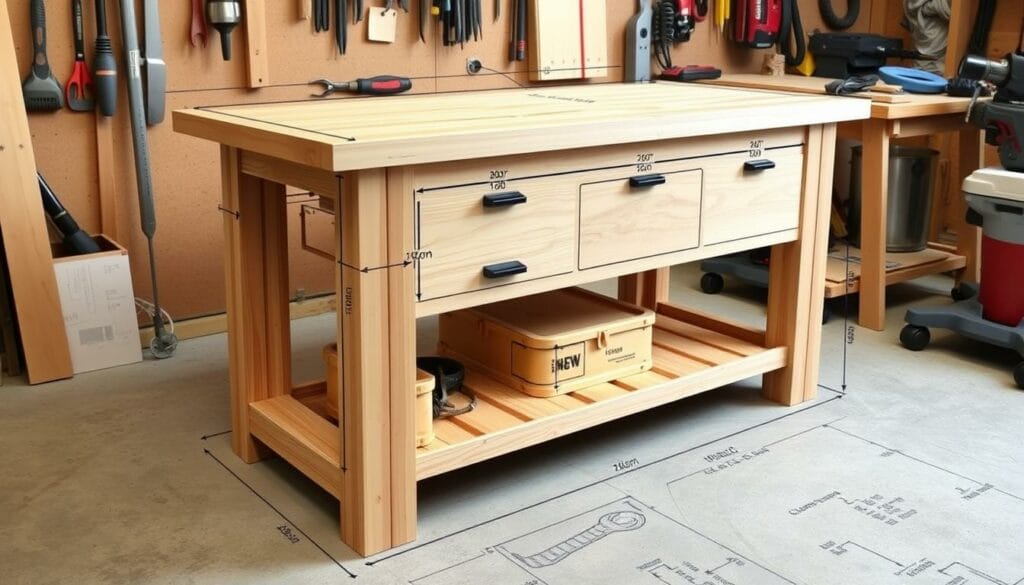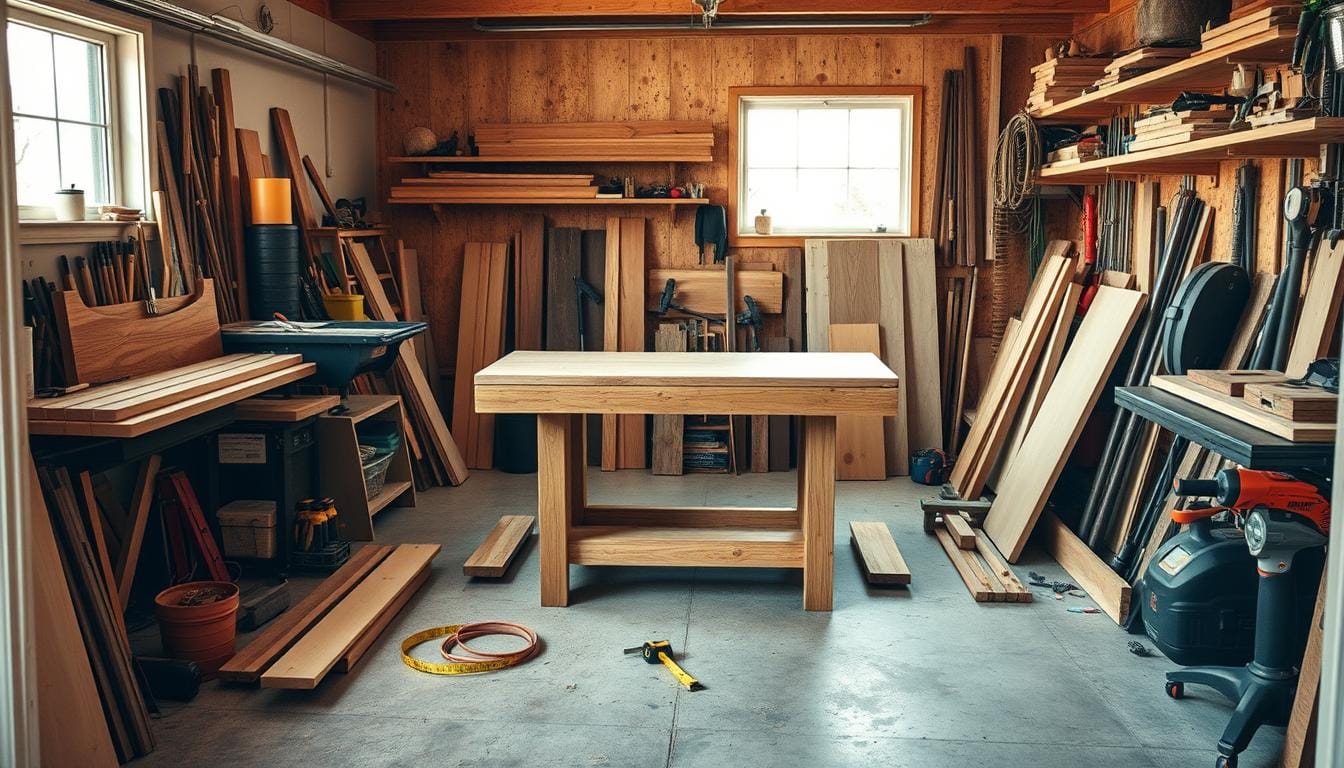A well-designed workbench is the heart of any DIY enthusiast’s home workshop. It’s a space where creativity flows freely. A sturdy, functional workbench can transform your project experience.
This dedicated area allows you to turn your vision into reality. It’s perfect for both seasoned woodworkers and beginners. Your workbench becomes a sanctuary for bringing ideas to life.
My childhood memories are filled with workshop moments shared with my father. The hammer’s rhythm and fresh wood scent bring joy and accomplishment. These experiences inspired me to create my own creative haven.
Now, I’m excited to build a space for my projects. It’s where I can let my imagination run wild. This workbench will be my personal zone for crafting and inventing.
Key Takeaways
- Discover the benefits of having a dedicated workbench for your home projects
- Learn about the essential features to consider when designing your workbench
- Explore various types of projects that can be enhanced by a well-designed workspace
- Gain step-by-step guidance on planning and building your own DIY workbench
- Unlock the potential of your home workshop with a customized, functional workbench
Why You Need a Workbench at Home

A dedicated workbench at home opens up endless DIY possibilities. It’s the heart of your woodworking tutorials and garage workspace setup. This versatile station supports various tasks and projects.
Benefits of Having a Dedicated Workspace
A designated work area offers many perks. It provides a stable surface for your tool storage solutions. This helps you stay organized and efficient.
A workbench also shields your surfaces from damage. It’s perfect for messy or heavy-duty projects. You’ll have a safe space for all your DIY needs.
Types of Projects That Benefit from a Workbench
- Woodworking and carpentry projects
- Home repairs and DIY tasks
- Automotive maintenance and repairs
- Electronics assembly and tinkering
- Crafting and hobbies
Essential Features of a Good Workbench
When choosing or building a workbench, look for these key features:
- Sturdy construction to support heavy loads
- Ample workspace for your projects
- Integrated storage solutions for tools and materials
- Ergonomic design to minimize strain during use
- Durable, easy-to-clean surface
A well-designed workbench boosts your productivity. It creates a functional space for all your home projects. Your hobbies will thrive with this efficient setup.
Planning Your Workbench Design

Measuring your space is key to creating the perfect workbench for your home projects. Consider your needs for Workbench Design Plans or Space-Saving Workbenches. Evaluate tasks from Beginner Woodworking to advanced DIY to ensure your workbench has the right features.
Measuring Your Space and Needs
Measure the area for your workbench, noting ceiling height, floor space, and any obstacles. Record the maximum dimensions you can fit.
Think about your project types and list must-have features. Consider extra storage, a built-in vise, or adjustable height capabilities.
Choosing the Right Materials
Explore materials for your workbench. Hardwoods like oak offer durability, while pine provides a budget-friendly option.
Consider your required weight capacity and desired workspace aesthetic. Check out various workbench designs for inspiration.
Drawing Up Your Plans
Create detailed plans for your workbench using your chosen materials and dimensions. Sketch the layout, including measurements for the top, legs, and additional features.
Account for wood thickness and construction details in your plan. With a clear blueprint, you’ll be ready to build your custom workbench.
Building Your Workbench Step by Step
You can build your own DIY workbench with the right tools and instructions. This guide will help you create a workspace for your woodworking projects. Let’s start building your workbench!
Tools You’ll Need for Construction
Gather essential tools like a power saw, drill, clamps, hammer, and measuring tape. These tools will help you build efficiently.
Don’t forget safety gear such as goggles and gloves. Protecting yourself is crucial during construction.
Assembly Instructions for Your Workbench
Start by building the frame using your planned measurements. Join the legs and supports to create a stable base.
Next, attach the tabletop and add a bottom shelf. This provides extra storage space.
Follow your plans carefully at each step. Take your time to ensure a strong, long-lasting workbench.
Finishing Touches to Enhance Your Workbench
Add personal touches to make your workbench unique and functional. Apply a water-resistant sealant to protect the wood.
Consider adding custom features like hooks, pegboards, or drawers. These will help keep your tools organized and easy to reach.
